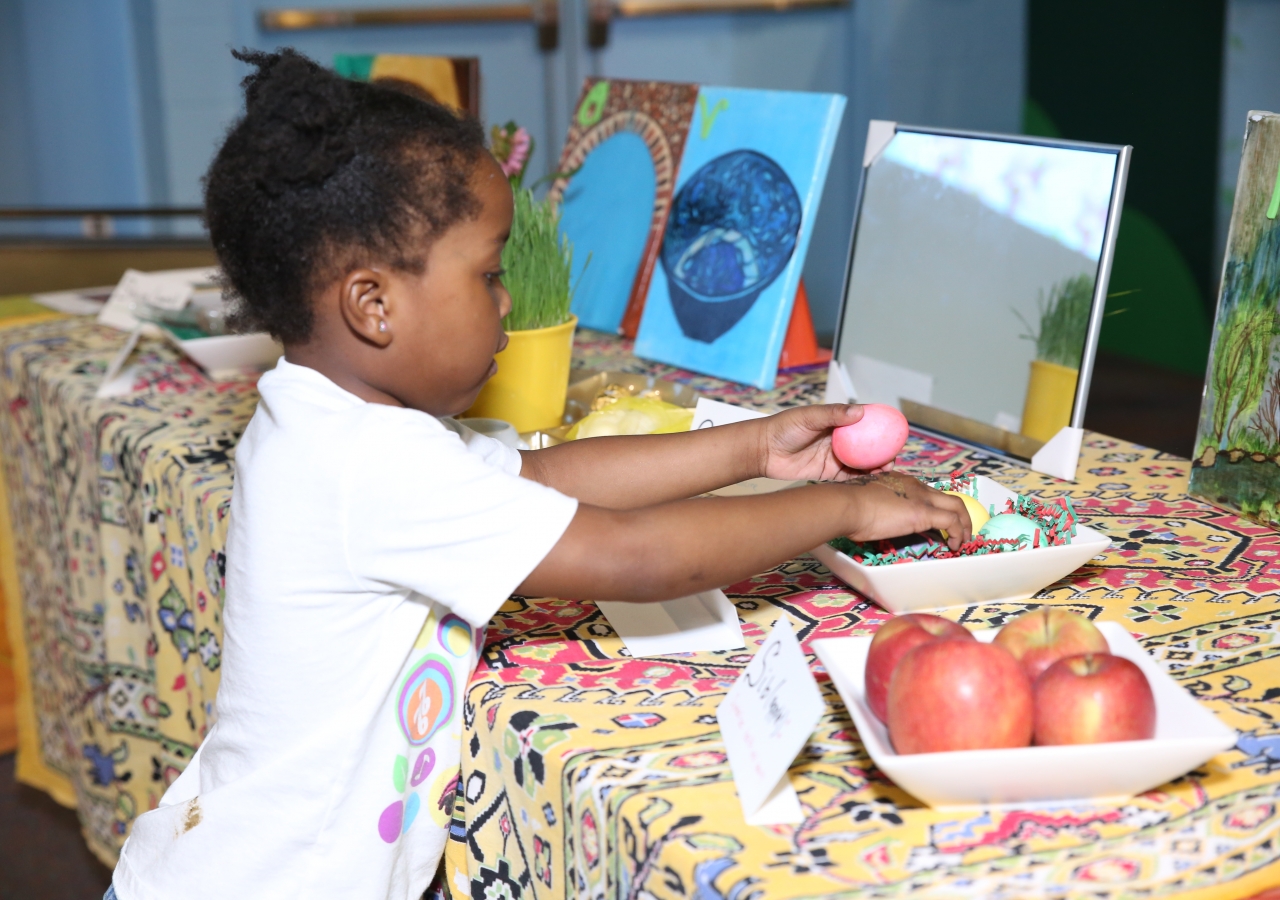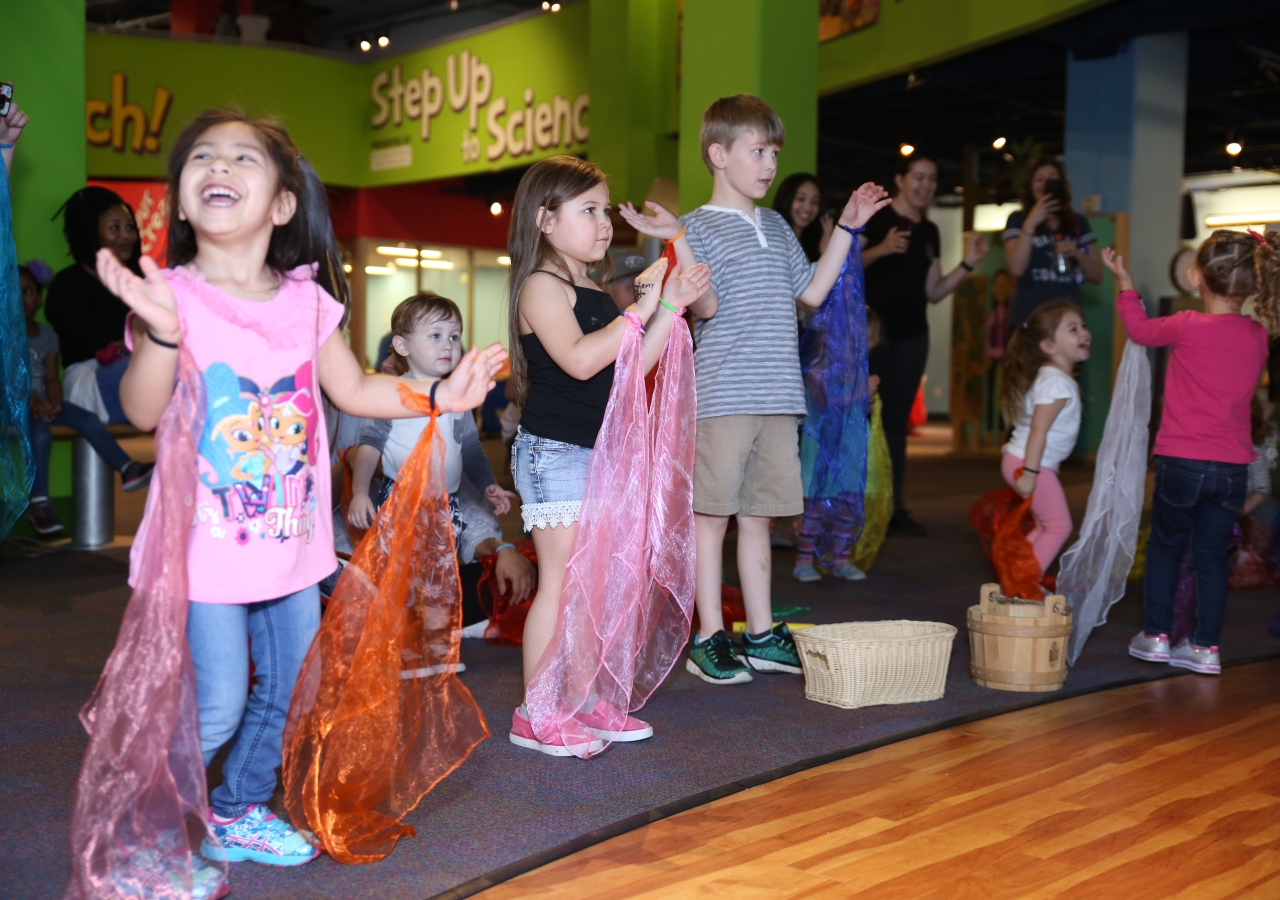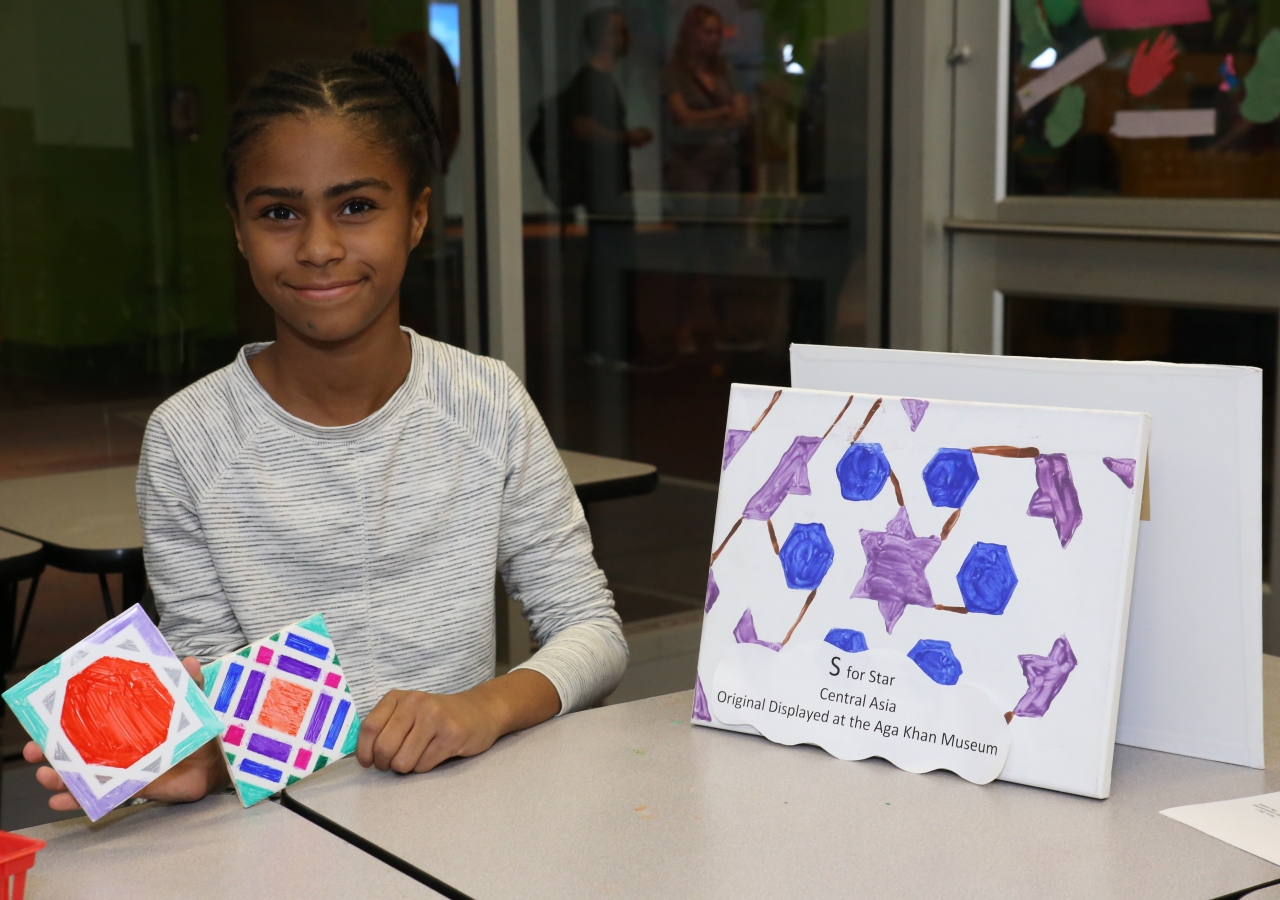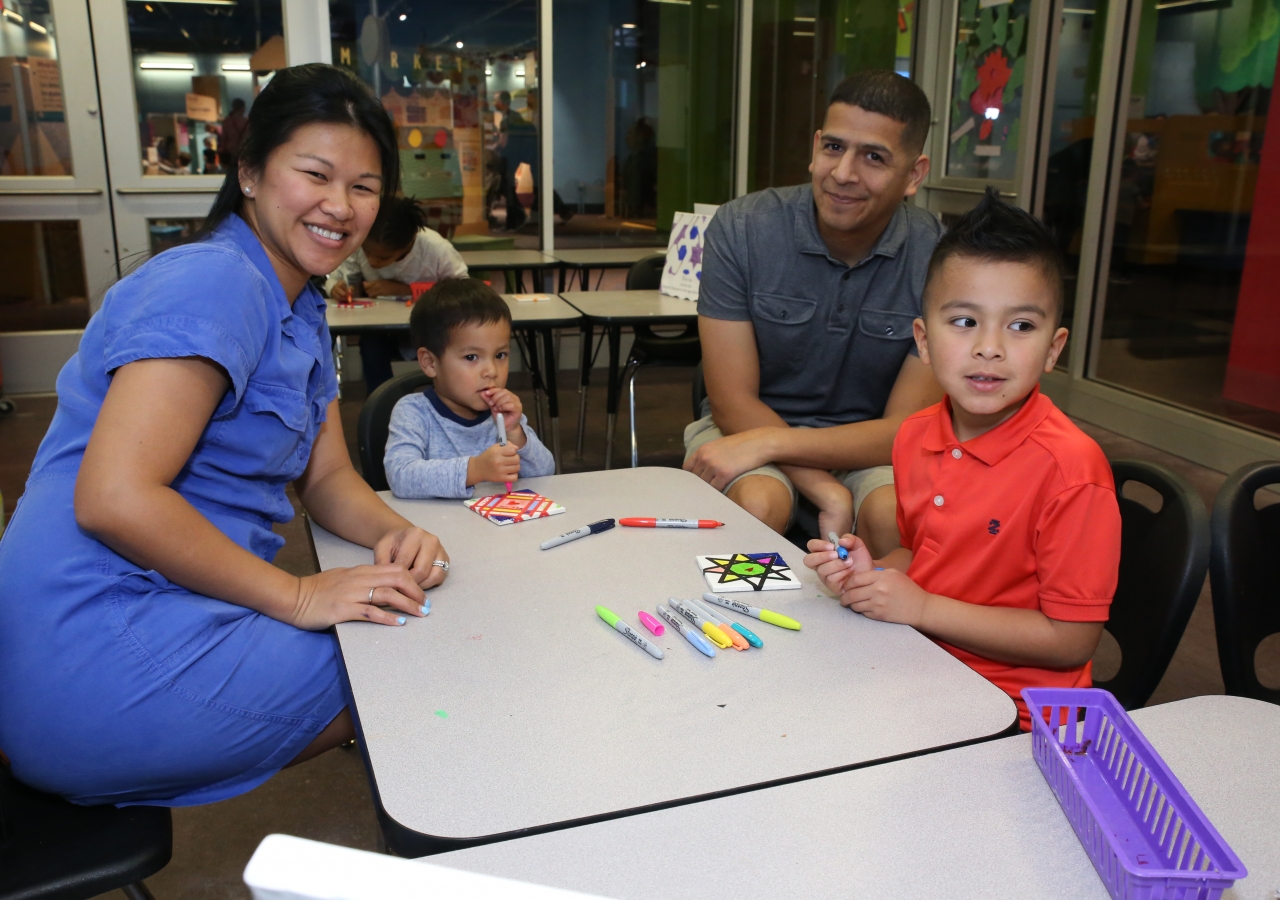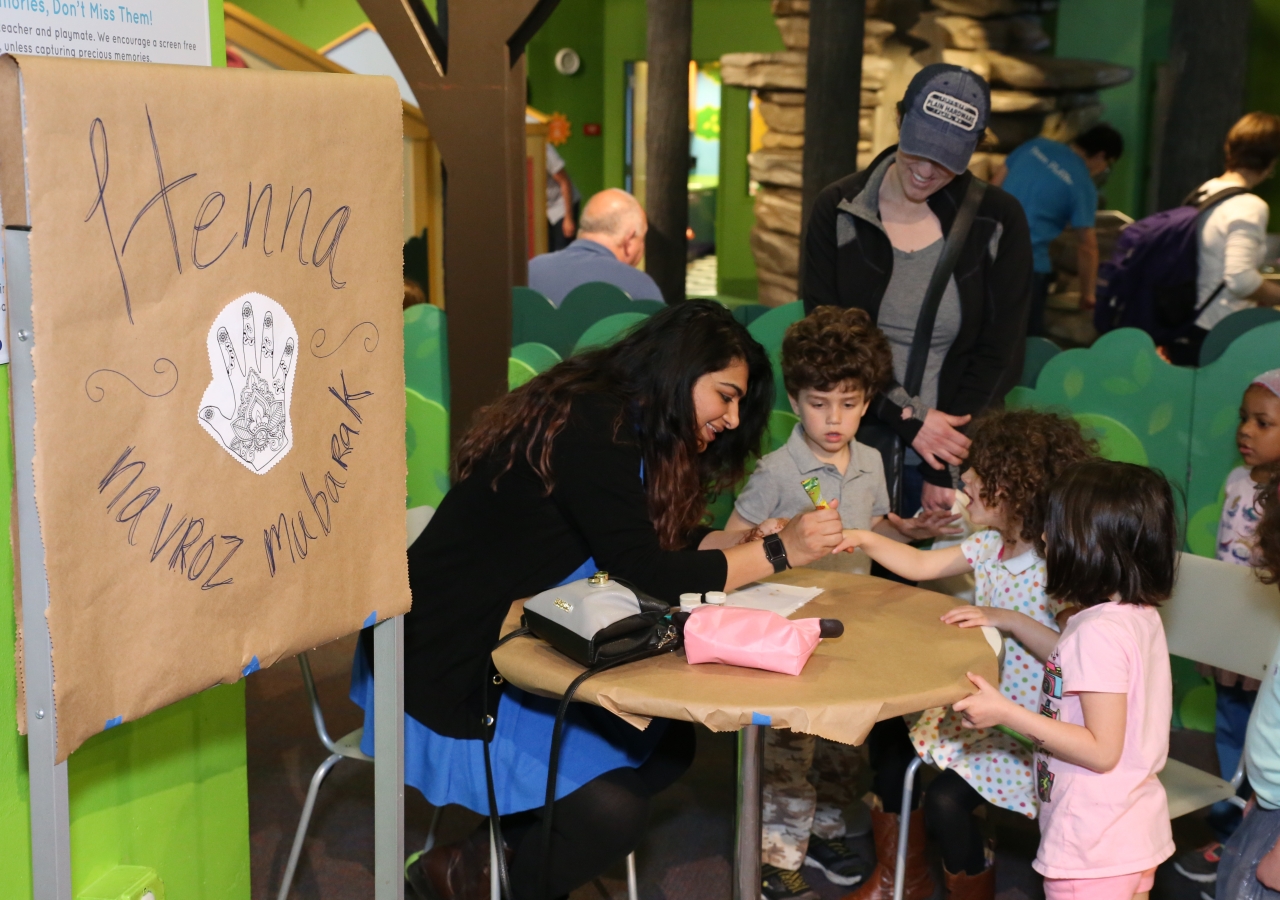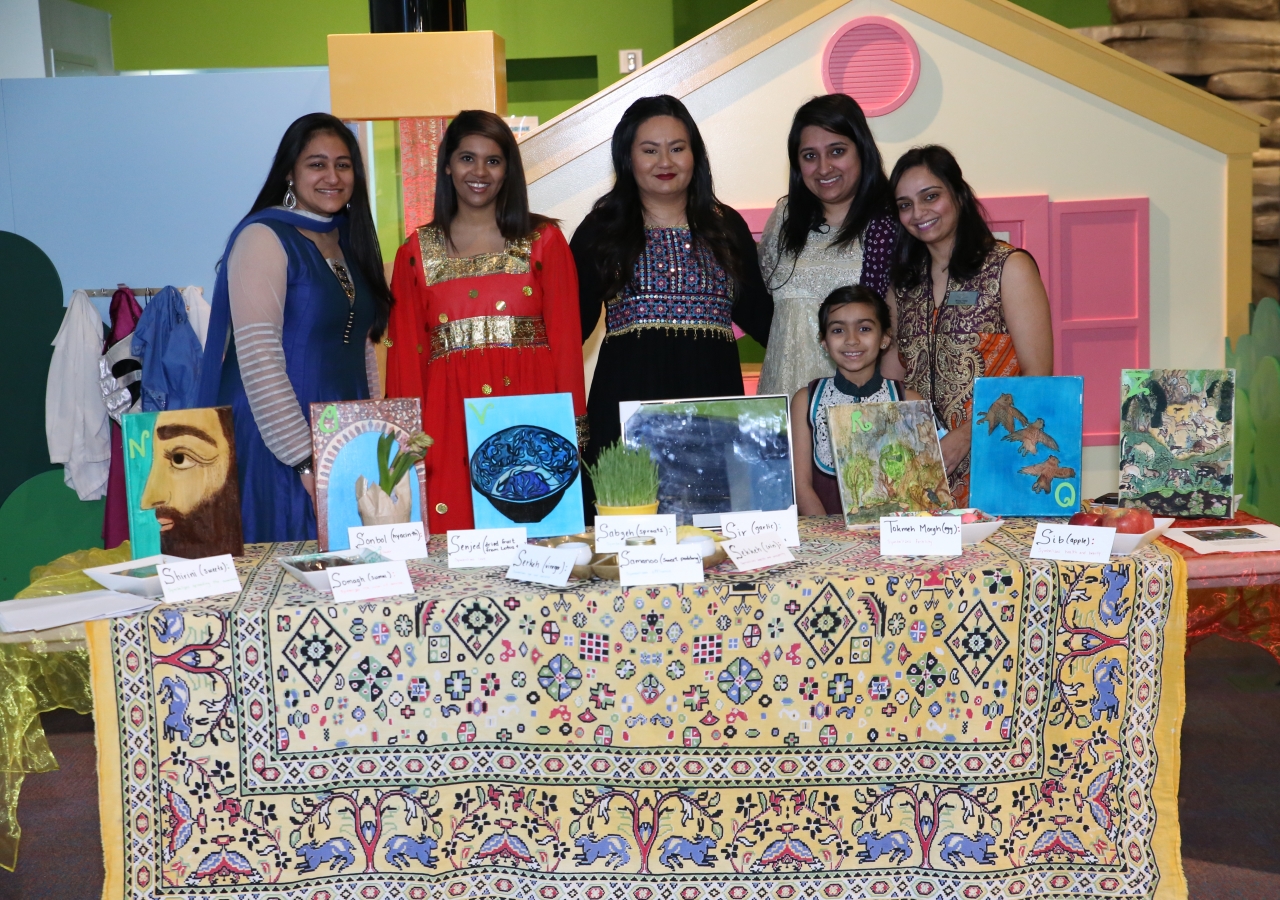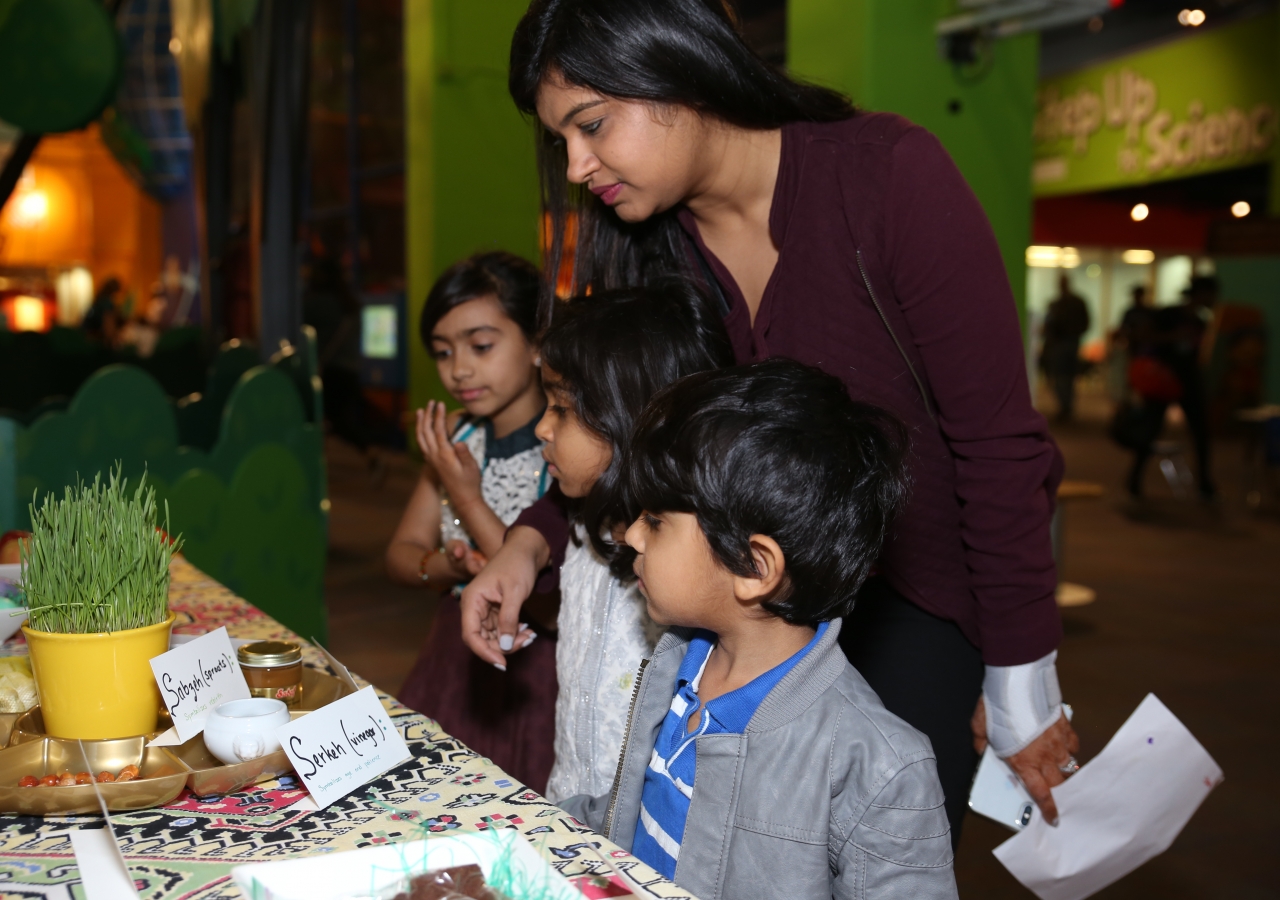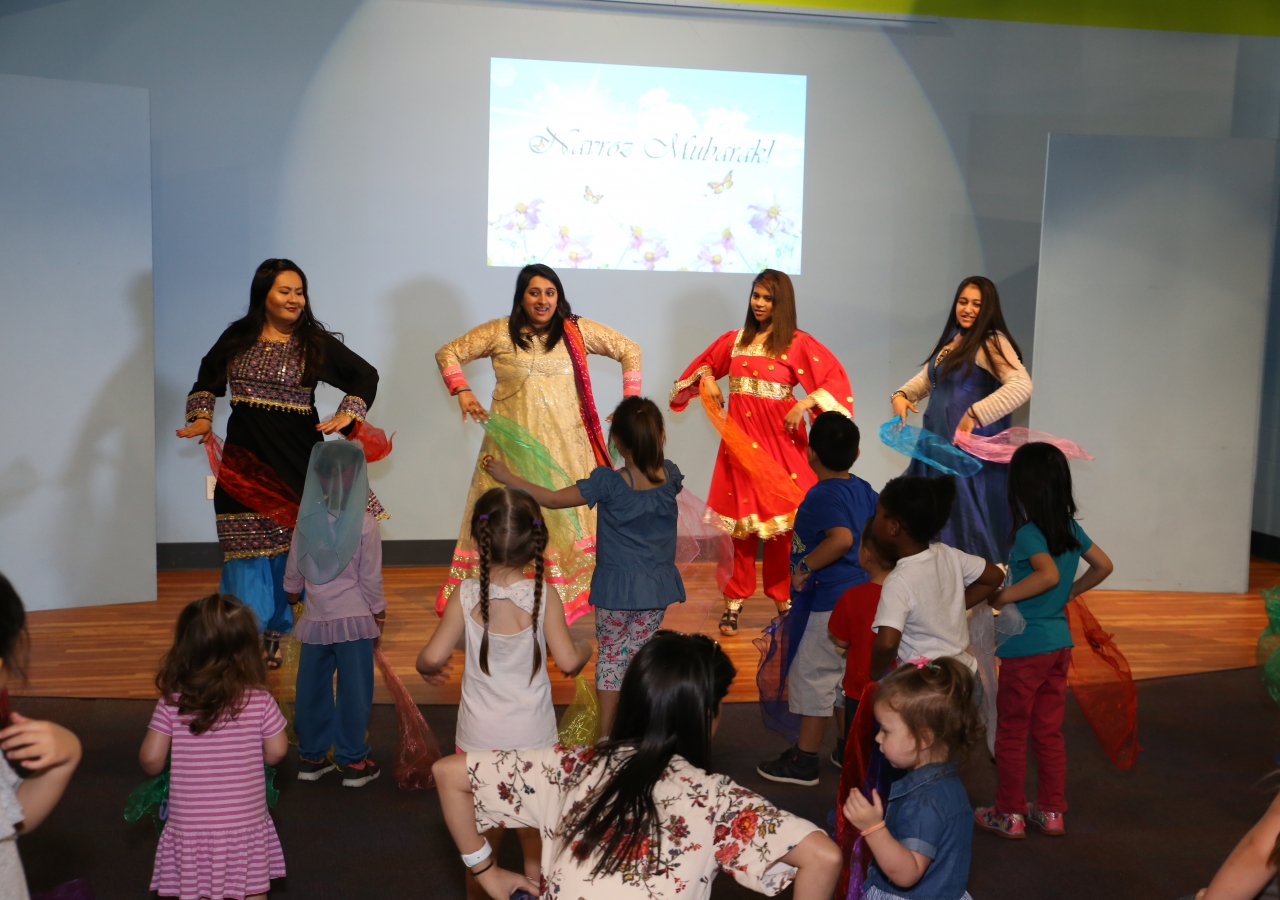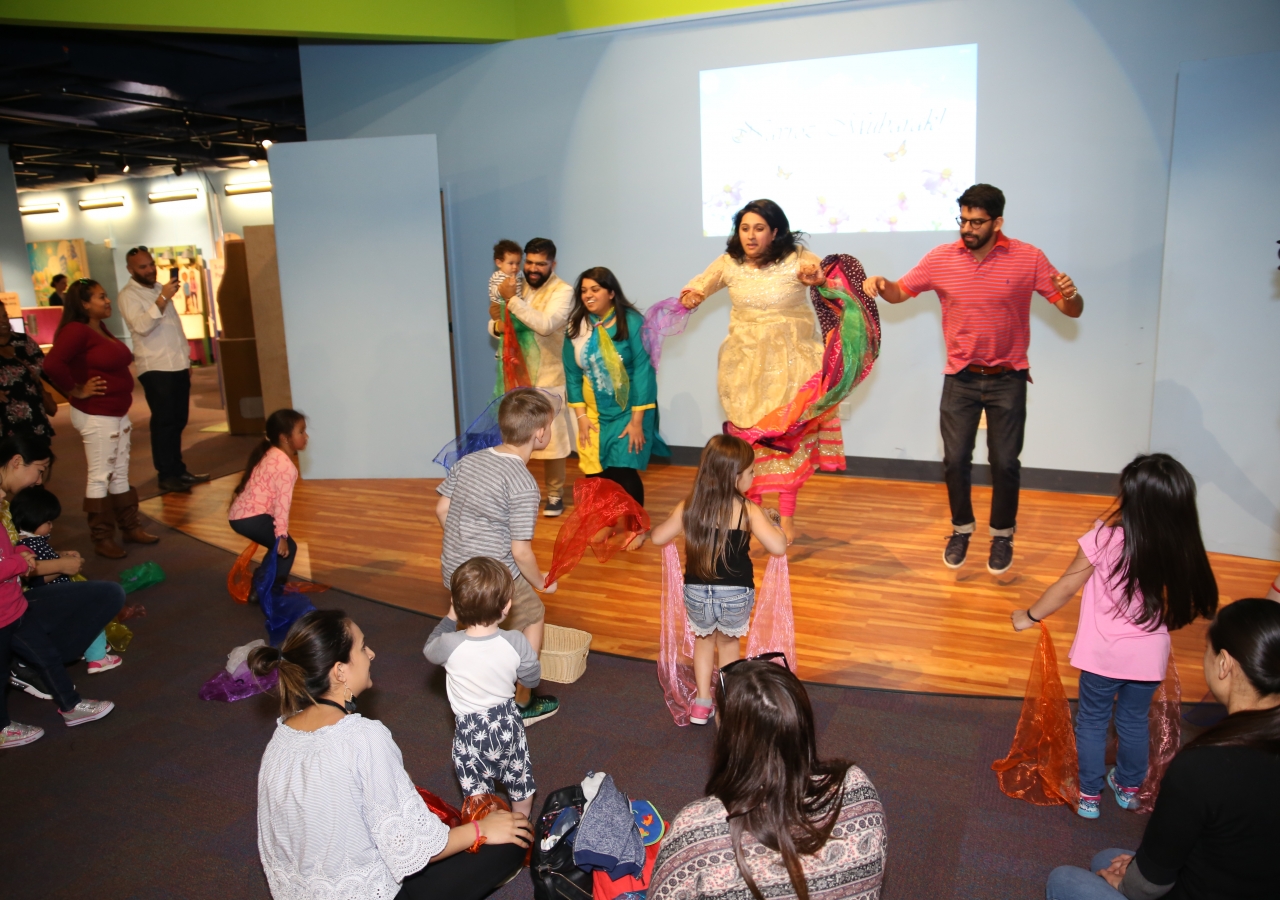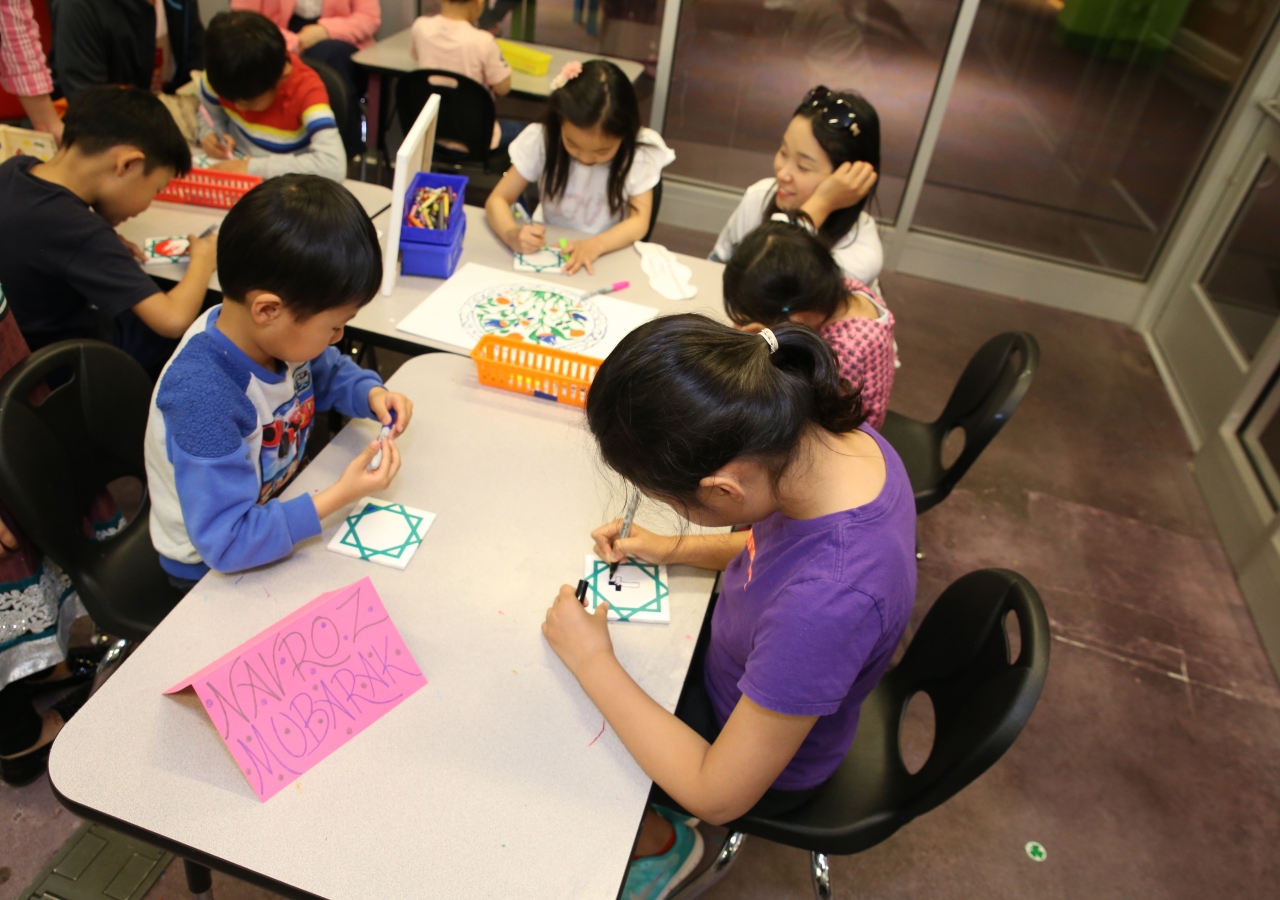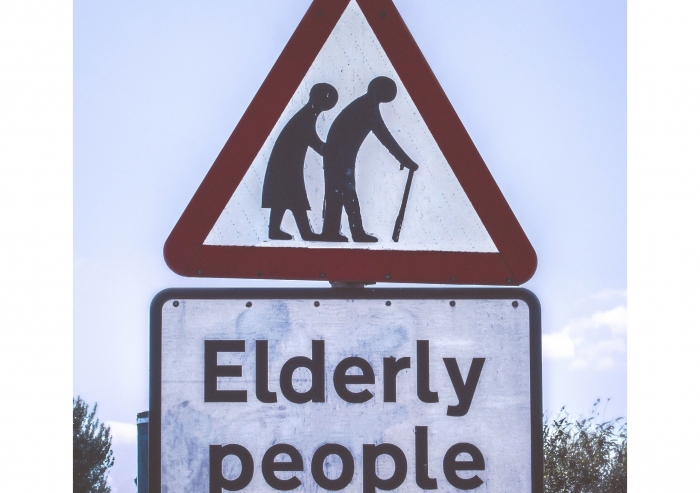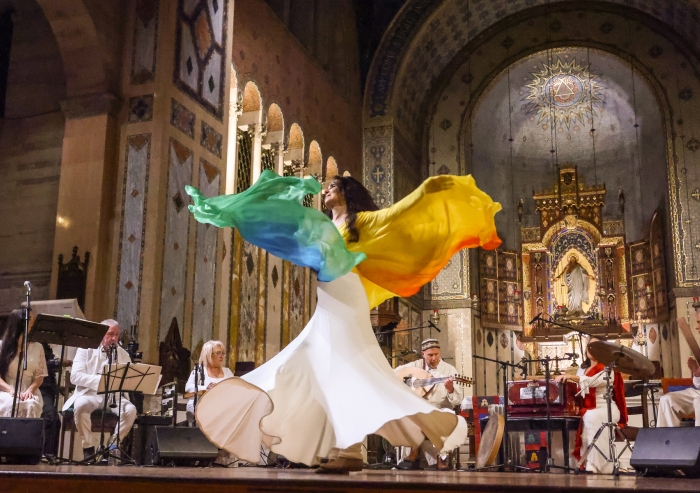Now in its fifth year, the museum, in partnership with the Ismaili Council for the Southeastern United States, hosted its annual Navroz celebration. The festive program, observing the Persian New Year, was part of the museum’s Meet the Holidays series -- an initiative focused on developing an appreciation of diversity in young children by celebrating the traditions of cultures all around the world through storytime, art, crafts, music, dance, and play.
The event featured a traditional Haft-Sin table, a display of seven foods from Persian culture symbolizing something good to come in the new year. Each item starts with the letter sin (s) in Persian and typically includes: Seeb (apple) representing beauty, Seer (garlic) representing medicine and good health, Serkeh (vinegar) representing age and patience, Senjed (dried olive) representing love, Samanu (sweet pudding) representing wealth and abundance, Sabzeh (wheat, barley, or sprouts) representing rebirth, and Somaq (sumac) representing sunrise or light overcoming dark.
In addition to the Haft-Sin table was a table for mehndi or henna application. Children and parents alike lined up in anticipation to have their hands decorated with intricate designs and adorned with glitter afterwards.
Nearby, on a small stage, children’s stories, seasonal songs, and traditional dances were performed regularly throughout the afternoon. The onstage performances were a kid-friendly introduction to the animals and atmosphere of spring in Western culture, while the second half featured traditional song and dance that included Pamiri dancing and movement with silk scarves. One of the stories, titled Navroz: A New Day, was authored by the museum’s Outreach Educator Nissa Kara, and told the tale of two young children as they eagerly prepared for Navroz celebrations with their family.
Jolan Turkington, who brought her daughter to the museum, enjoyed the sights and sounds of the performances. “The kids were so engaged. They loved the colors and they loved the dancing,” she beamed. “It’s such a great way to introduce them to something that’s new without feeling like it’s inaccessible. It’s something that everyone can enjoy regardless of how you’ve grown up.” Her daughter enthusiastically joined in when the audience was invited to dance on stage.
In the art studio, kids painted geometric shapes on tiles, a traditional element of Islamic art and architecture. On display in the art studio, were replica oil paintings from the Aga Khan Museum (AKM), painted by Shalina Charanya, as well as its books, Astounding ABC and Two Crafty Jackals.
Children also had the opportunity to make coconut date balls, a cold-cooking activity that was part of the Eat a Georgia Rainbow program at the children’s museum. Dates are mentioned in the Qur’an more than any other fruit and it is believed that Prophet Muhammad (pbuh) held them in high regard in matters of health and prosperity; as such, they are often one of the many staples of this holiday.
Minaz Khetani, from Atlanta Northwest Jamatkhana, reflected on her experience at the Navroz event as she shadowed her children from station to station and throughout the rest of the museum’s exhibits.
“I have always come here; this is my third or fourth time. It creates awareness of Navroz, and it’s an interactive way for my children to learn about Navroz. So, it’s not just about going to Jamatkhana and talking about it in Religious Education Class; it’s actually coming out and into the community. This is a place they have been to several times before, but now they are seeing our culture being portrayed here,” remarks Minaz. “Hazar Imam talks about pluralism and diversity, so we are bringing our culture here. We are so lucky and blessed to have this experience with the kids. It’s the perfect way to gear up for Navroz and be in the mindset. We have a membership here and we love it.”
The springtime event served not only as a platform to educate the broader community about the significance of Navroz, but also as an opportunity for the Children’s Museum of Atlanta and the Ismaili community to begin the new year with a renewal of friendship and partnership.
Five years ago, we approached the Children’s Museum about Navroz, and they were thrilled,” recalls Nissa. “Since then, we have been doing it every year.” Nissa has been a part of the museum’s Navroz festivities from the very start. Her involvement began as a voluntary role in March 2014 when the Ismaili community first partnered with the museum for the program. When the holiday approached one year later, Nissa volunteered again, this time serving as project lead for the event, which involved working closely with the museum’s directors. Coincidentally, the Outreach Educator position opened up, to which Nissa applied and was hired to that same month.
“I believe that being a part of the Ismaili community has helped me in so many ways,” explains Nissa “, and continues: “It has showed me the importance of hard work and dedication, the importance that Mawlana Hazar Imam puts on living within the ethics of my faith, and ultimately that is what directors saw in me when they asked me to come on board, As an Outreach Educator, I work in the community with children that reside in shelters and attend schools that are in lower income neighborhoods. My faith has always taught me to give back to the communities we live in, and be civically involved - which is what I continue to aspire to do.”
The partnership between the two communities has grown over the past five years and continues to flourish. Last year, the museum added an Eid al-Adha program. This year, the museum and Ismaili community will host Navroz, Eid al-Adha, and Eid al-Fitr celebrations.
Nissa exudes strong sense of pride in the collaborative efforts of her work and with faith communities. “In the world we live in today, it’s important to educate our kids on diversity. I think it shows a lot of people, especially adults, that we have more in common and that our differences make us strong - and to me that's important.

